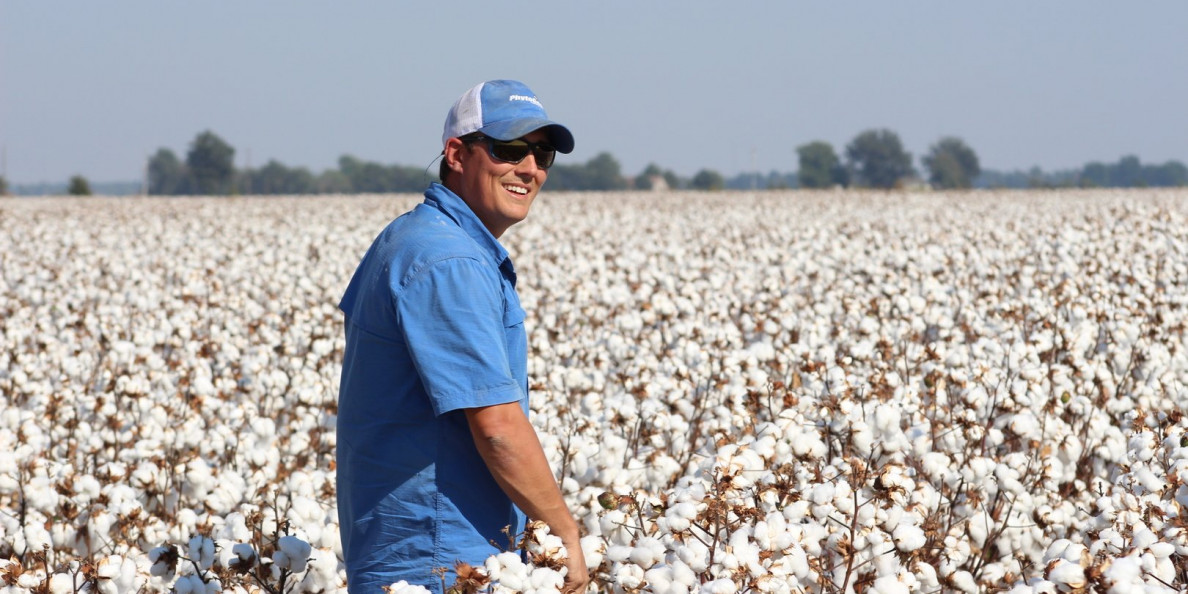U.S. cotton acres will be up 7% in 2018 compared to 2017 and nearly 35% from 2016, according to USDA’s Prospective Plantings report. Amid low grain prices, this Southern crop is back in vogue—and it’s expanding in certain states that traditionally plant row crops.
Kansas, Oklahoma and Texas are projected to increase cotton acres this year by 40%, 16% and 6%, respectively. These three states will account for the highest percentage growth in cotton plantings of any U.S. area this year.

Why the increase? Five major factors are at play, according to a new report, Cotton’s Northern Expansion, by CoBank.
The reasons cotton acres are up include:
- Low prices for grain crops: Five years of low prices for corn, soybeans and wheat have forced producers to look for other crop options. For many, 80-cent cotton pencils out better than $4 corn, $5 wheat or $11 soybeans, CoBank says.
- Shrinking water supplies: The dropping water table of the Ogallala Aquifer has led to groundwater pumping restrictions. Such constraints are driving producers away from traditional, water-intensive crops. A desert crop, cotton is a less-thirsty alternative.
“Cotton uses one-third to one-half less water than corn,” says Gary Feist, manager of Southern Kansas Cotton Growers Cooperative.
- Round bale harvesters: This relatively new cotton equipment streamlines the harvesting operation and increases ginning and transportation efficiencies. Round bale harvesters eliminate the need for a boll buggy or module maker, which lowers labor costs.
- Better cotton genetics: New upland cotton varieties are bolstering yields and aiding the crop’s expansion in the three states.
- Cotton’s reentry to the farm bill: Cotton was excluded from the 2014 farm bill but is now back in. Although the details aren’t yet clear, many see cotton’s farm-program addition as a benefit for the crop.
“That will be a huge factor in the stability in cotton acreage and production,” says Kevin Brinkley, president and CEO of Lubbock-based Plains Cotton Cooperative Association, one of the largest handlers of U.S. cotton.
The anticipated increase in production is spurring expansion in cotton infrastructure, CoBank reports. Additionally, farmers are making significant investments, which will help to sustain cotton as part of the crop rotation in the Southwest expansion areas.
“The projections of increased planting are sending signals through the cotton industry that more ginning capacity and storage capacity is needed,” says Ben Laine, a senior industry analyst with CoBank. “We are already seeing some cooperative gins in Kansas expanding capacity, sometimes doubling the previous year’s, and others in all three states are increasing storage capacity by upwards of 30%.”
But, will cotton acres be sustainable in these Southwestern states? Many stakeholders believe the answer is yes.
“Producers have more skin in the game now,” says Steve Verett, who has been executive vice president of the trade group, Plains Cotton Growers, for more than 20 years. “They’re looking long-term. Even if corn prices go up, we will still see cotton in their crop rotation. Because of their investments, we won’t see a wholesale movement out of cotton.”
Read the full CoBank report, “Cotton’s Northern Expansion.”


